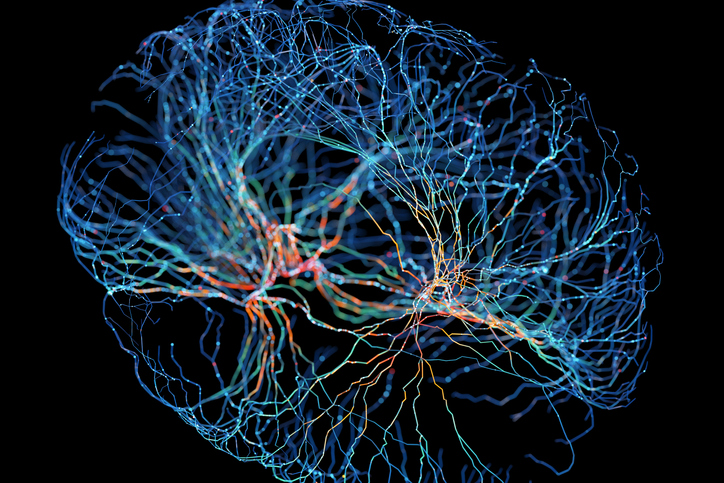Tufts University School of Medicine researchers developed imaging technology that records neuronal activity throughout the brain during the first weeks of recovery. They discovered that a head injury serious enough to affect brain function, such as that caused by a car accident or sudden fall, leads to changes in the brain beyond the site of impact. In an animal model of traumatic brain injury, the researchers found that both hemispheres work together to forge new neural pathways in an attempt to replicate those that were lost.
Their findings are published in Cerebral Cortex in an article titled, “Traumatic brain injury disrupts state-dependent functional cortical connectivity in a mouse model.”
“Traumatic brain injury (TBI) is the leading cause of death in young people and can cause cognitive and motor dysfunction and disruptions in functional connectivity between brain regions,” wrote the researchers. “In human TBI patients and rodent models of TBI, functional connectivity is decreased after injury. Recovery of connectivity after TBI is associated with improved cognition and memory, suggesting an important link between connectivity and functional outcome. We examined widespread alterations in functional connectivity following TBI using simultaneous widefield mesoscale GCaMP7c calcium imaging and electrocorticography (ECoG) in mice injured using the controlled cortical impact (CCI) model of TBI.”
“Even areas far away from the injury behaved differently immediately afterward,” said first author Samantha Bottom-Tanzer, an MD/PhD student in neuroscience at the School of Medicine. “Traumatic brain injury research tends to focus on the region of injury, but this study makes a good case that the entire brain can be affected, and imaging in distal regions can provide valuable information.”
Bottom-Tanzer and colleagues are the first to use an imaging technique combining fluorescent sensors of neuronal activity and electrodes to record how many parts of the brain talk to each other after a brain injury. The team tracked neural activity in mice for up to three weeks post-injury during periods of exercise and rest.
“Whether paying attention or walking, brains switch states depending on the task you’re doing,” said senior author Chris Dulla, PhD, professor and interim chair of neuroscience at the School of Medicine. “After traumatic brain injury, this ability is not as robust, indicating such events are impairing how the brain switches states in a way that we don’t yet understand.”
“What we can see from the data is that the brain has new solutions for how to do all these complex tasks,” he added.
The researchers predict that imaging a patient’s brain as they carry out various activities could better pinpoint how somebody might be injured or which functions are impacted, enhancing an individual’s treatment.
“This study underscores the complexity of how injury affects a dynamic and always-changing brain,” said Bottom-Tanzer. “Most people think of the brain in one state, but our data indicates there are fluctuations, and it might offer opportunities to explore different interventions for physical therapy, speech therapy, and more.”
Bottom-Tanzer, Dulla, and colleagues plan to research changes in neural activity following traumatic brain injury for an even longer post-recovery period.
“Even areas far away from the injury behaved differently immediately afterward,” said Bottom-Tanzer. “Traumatic brain injury research tends to focus on the region of injury, but this study makes a good case that the entire brain can be affected, and imaging in distal regions can provide valuable information.”







